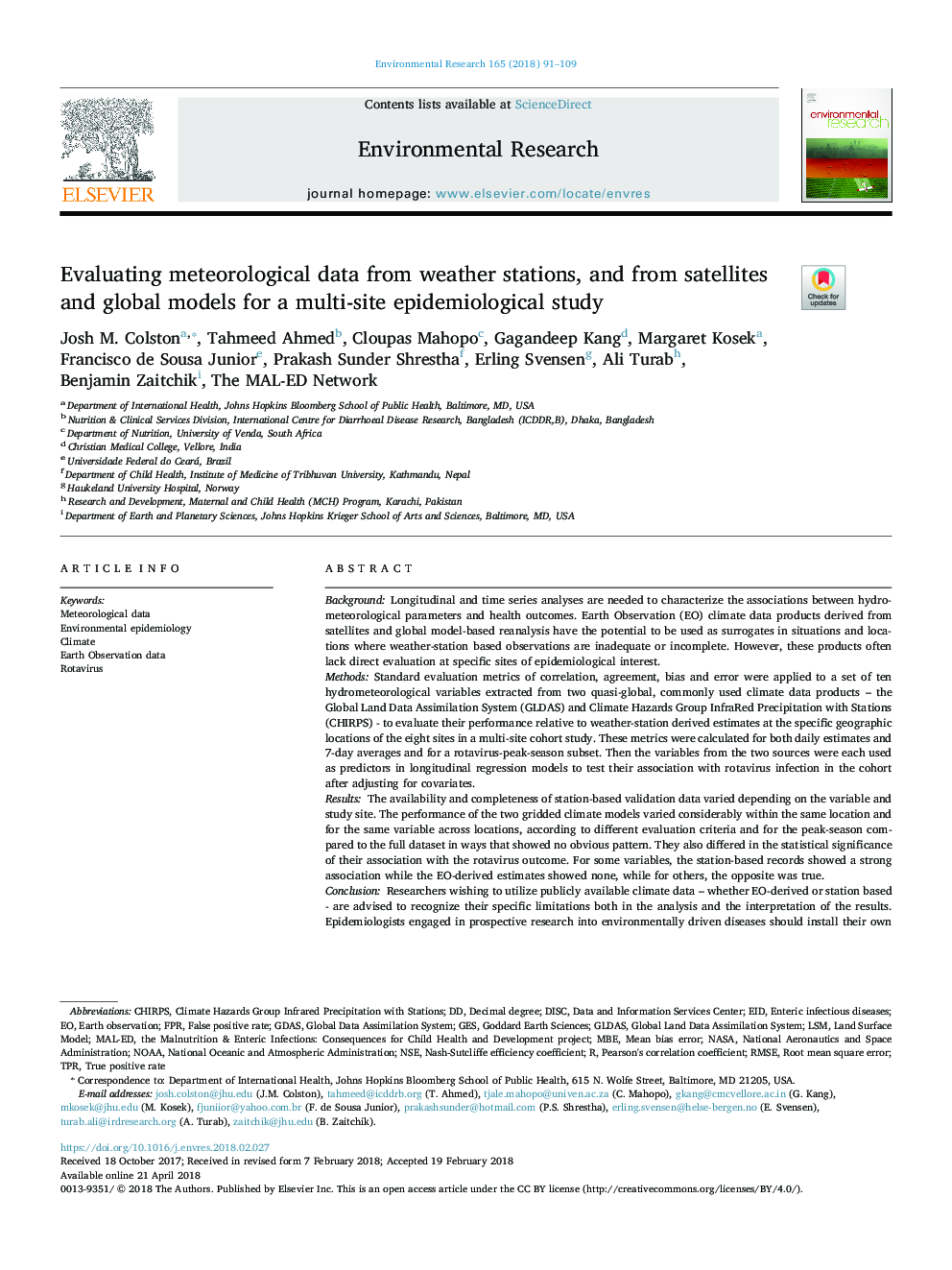| Article ID | Journal | Published Year | Pages | File Type |
|---|---|---|---|---|
| 8868882 | Environmental Research | 2018 | 19 Pages |
Abstract
Researchers wishing to utilize publicly available climate data - whether EO-derived or station based - are advised to recognize their specific limitations both in the analysis and the interpretation of the results. Epidemiologists engaged in prospective research into environmentally driven diseases should install their own weather monitoring stations at their study sites whenever possible, in order to circumvent the constraints of choosing between distant or incomplete station data or unverified EO estimates.
Keywords
RMSEGDASEarth observation dataMBEMAL-EDFPRDISCGESEIDNOAAGLDASNSEClimateEnvironmental epidemiologyMean bias errorMeteorological dataRotavirusTPRRoot mean square errorLSMNational Oceanic and Atmospheric Administrationnational aeronautics and space administrationChirpsPearson's correlation coefficientLand surface modelEarth observationNASAFalse positive rateTrue positive rate
Related Topics
Life Sciences
Environmental Science
Health, Toxicology and Mutagenesis
Authors
Josh M. Colston, Tahmeed Ahmed, Cloupas Mahopo, Gagandeep Kang, Margaret Kosek, Francisco de Sousa Junior, Prakash Sunder Shrestha, Erling Svensen, Ali Turab, Benjamin Zaitchik, The MAL-ED Network The MAL-ED Network,
